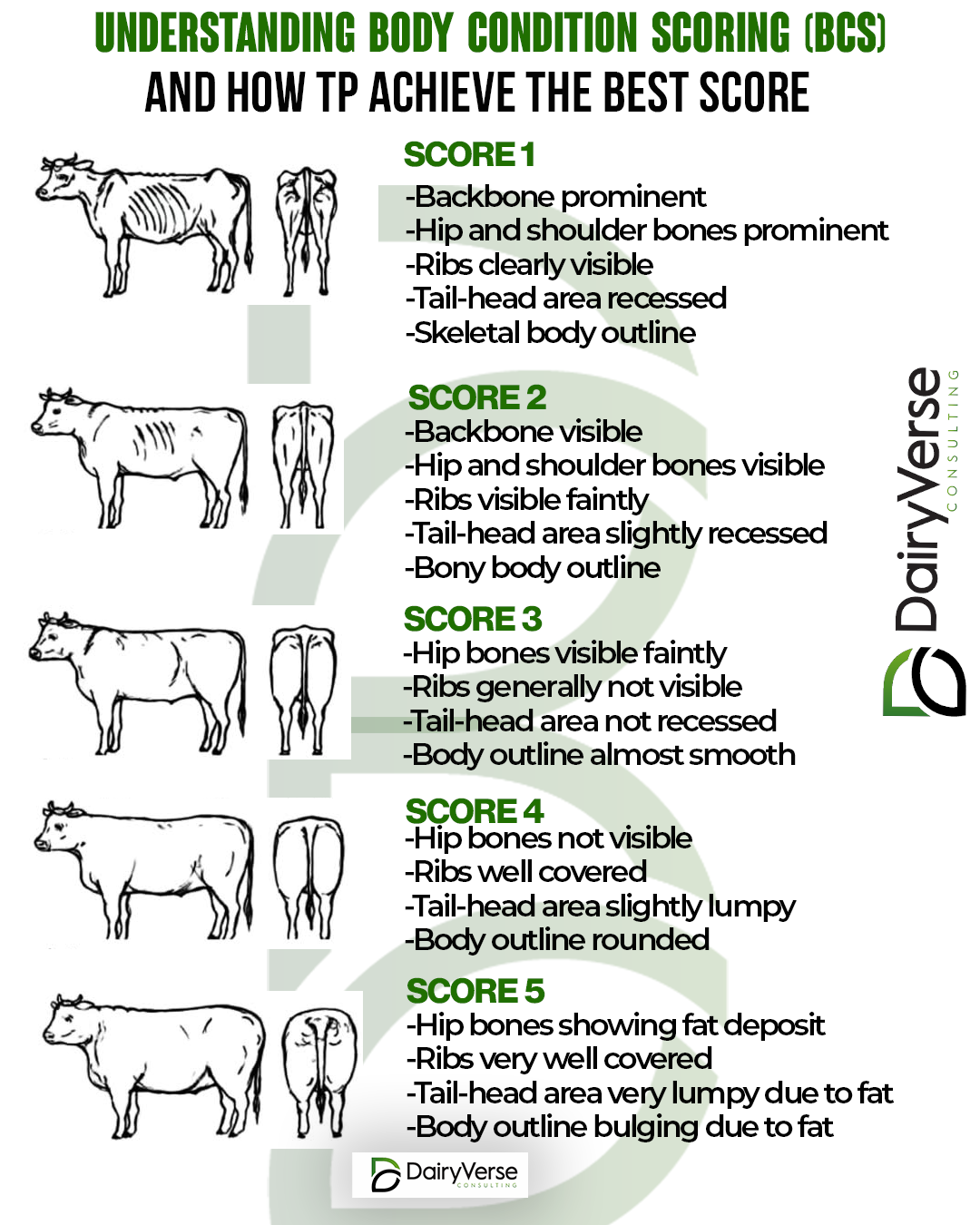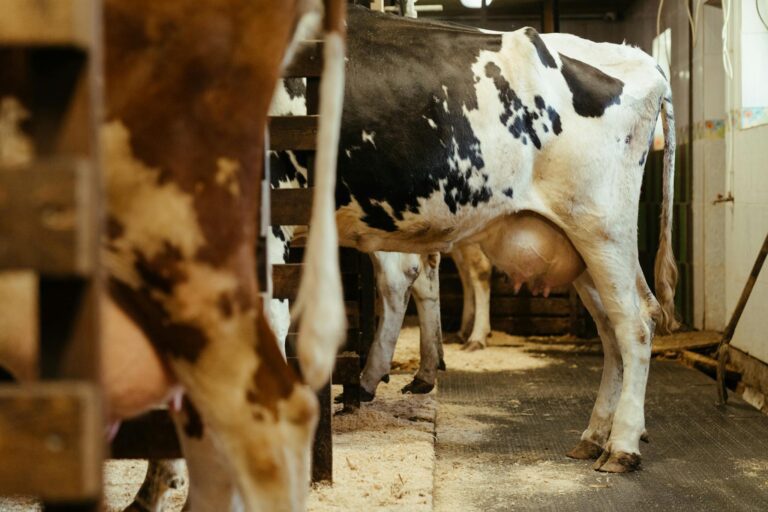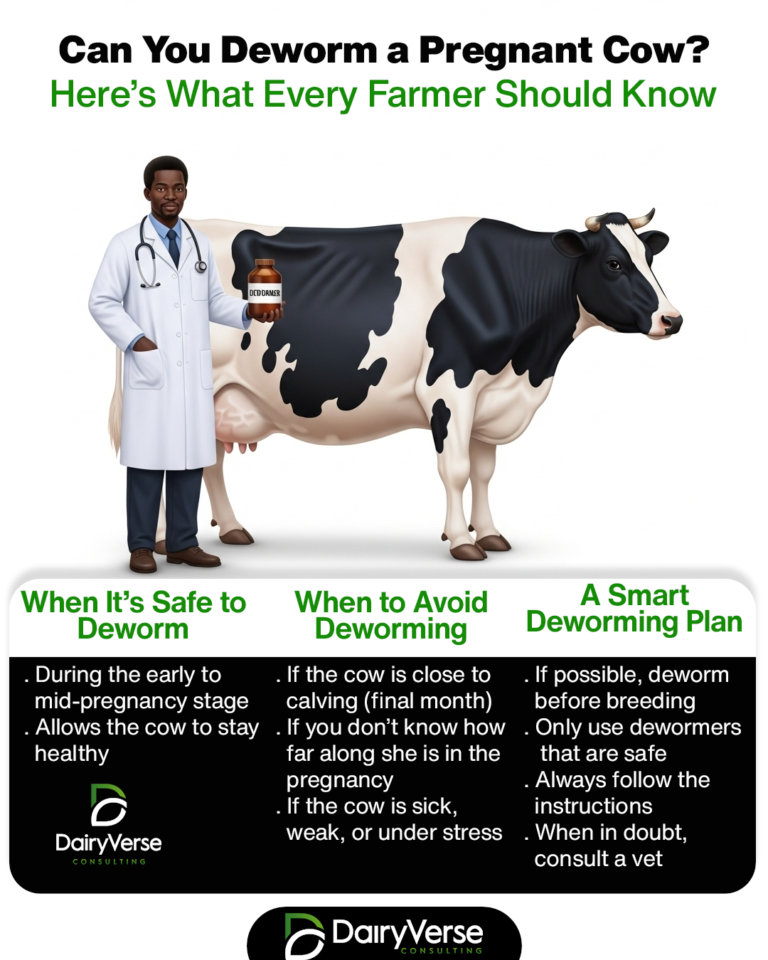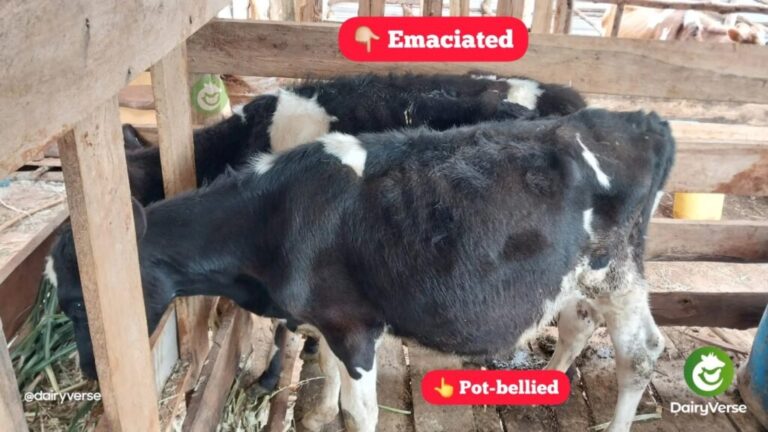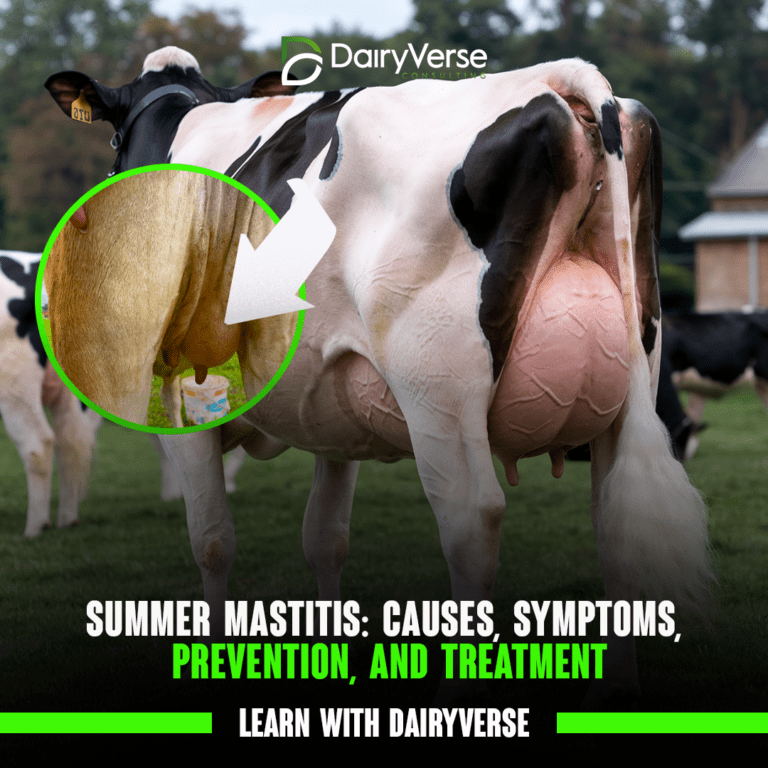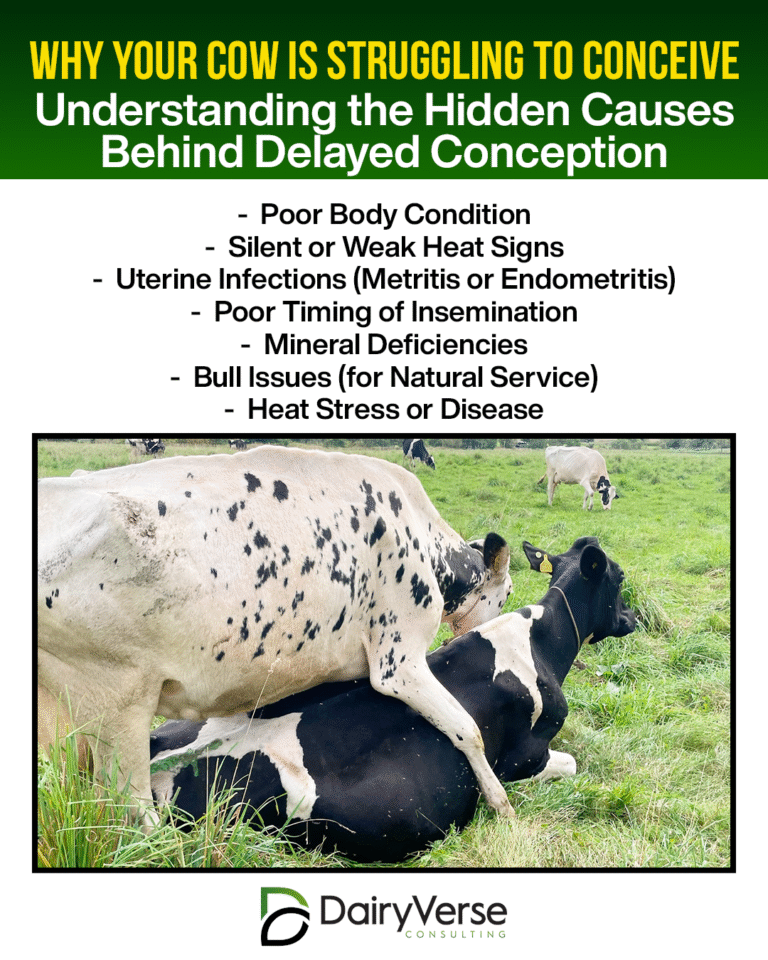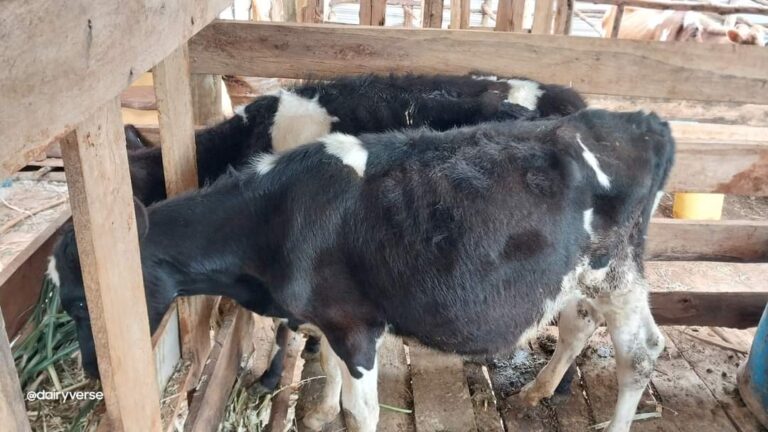Optimizing Dairy Cow Health Through Body Condition Scoring and Targeted Supplementation
Body Condition Scoring (BCS) is an indispensable tool in dairy herd management. By visually assessing the amount of fat and muscle covering a cow’s frame, farmers can evaluate whether their cows are undernourished, over-conditioned, or in ideal shape. Proper body condition plays a critical role in milk production, fertility, calving ease, and overall cow health. The following comprehensive overview will help you understand each score from 1 through 5, followed by a detailed discussion on how Booster+® can help cows achieve and maintain the optimal range of BCS 3–4.
1. Understanding Body Condition Scoring (BCS)
Body Condition Scoring is typically based on a numerical scale—commonly 1 to 5—where 1 indicates extremely thin cows, 3–4 denotes moderate or ideal condition, and 5 signifies excessively fat cows. Key areas to observe include:
- Backbone (Spine)
- Hips and Pin Bones
- Ribs
- Thighs (Rear View)
These observations guide farmers and nutritionists in adjusting feed rations and overall management to keep cows healthy, productive, and comfortable.
2. Detailed Breakdown of Each Body Condition Score
BCS 1: Severely Under-Conditioned
- Physical Appearance
- The cow’s backbone is extremely prominent, with a sharp outline visible from a distance.
- The hip and shoulder bones protrude significantly.
- Ribs are clearly visible, indicating minimal fat cover.
- The tail-head area is sunken and hollow.
- Overall, the cow has a skeletal, emaciated look.
- Implications
- Health Risks: Cows at BCS 1 are highly susceptible to diseases and infections due to a weakened immune system.
- Reproductive Challenges: They often experience delayed or absent heat cycles and low conception rates.
- Low Milk Yield: With minimal fat and energy reserves, these cows cannot sustain optimal milk production.
- Management Recommendations
- Nutritional Intervention: Immediately provide high-quality forages and energy-dense feeds.
- Veterinary Check: Rule out underlying health issues such as parasites or chronic diseases.
BCS 2: Under-Conditioned
- Physical Appearance
- The backbone is still visible but less pronounced than in BCS 1.
- The hip bones and shoulder bones are apparent but not as sharply defined.
- Ribs are still fairly visible, indicating low fat reserves.
- The tail-head area is slightly recessed.
- Implications
- Moderate Health Concerns: Although not as severe as BCS 1, these cows still have insufficient body reserves, placing them at risk of lowered immunity.
- Fertility Issues: Heat cycles may be sporadic or delayed, affecting breeding schedules.
- Production Limits: Milk output is often below potential because of limited energy stores.
- Management Recommendations
- Increased Feeding: Offer a balanced diet with higher energy and protein levels to promote weight gain.
- Close Monitoring: Track changes in feed intake and body condition to ensure they move toward the ideal range.
BCS 3: Ideal to Moderate Condition
- Physical Appearance
- The hip bones are faintly visible but not protruding.
- The ribs may be partially visible or felt but are not overly defined.
- There is a slight fat covering over the backbone and around the tailhead.
- The body outline appears smooth, indicating a healthy fat-to-muscle ratio.
- Implications
- Optimal Health: Cows in this score typically show robust immune function and minimal risk for metabolic disorders.
- Efficient Production: They can sustain good milk yields and maintain adequate energy stores for lactation demands.
- Better Fertility: Regular heat cycles and good conception rates are more likely.
- Management Recommendations
- Balanced Nutrition: Maintain current feeding regimen, ensuring all dietary needs are met (energy, protein, vitamins, and minerals).
- Regular Assessments: Keep an eye on changes, as cows can quickly shift from BCS 3 to 2 or 4 depending on feed availability and lactation stage.
BCS 4: Good Condition, Slightly Above Moderate
- Physical Appearance
- The hip bones are not visibly sharp; they may be rounded or covered with a modest fat layer.
- The backbone feels well covered with a thin layer of fat.
- Ribs are less visible, and you may have to press firmly to feel them.
- The tail-head area is slightly plump but not excessively filled.
- Implications
- Stable Health: Cows in BCS 4 usually maintain a high level of health and strong immune responses.
- High Milk Production Potential: They have adequate fat reserves to support the demands of lactation.
- Fertility Benefits: Breeding is generally successful, provided they do not move toward over-conditioning (BCS 5).
- Management Recommendations
- Monitor Energy Intake: While this score is acceptable, excessive weight gain can lead to BCS 5.
- Ensure Exercise: Allow adequate movement to prevent cows from becoming overweight.
BCS 5: Over-Conditioned
- Physical Appearance
- The body appears very rounded with obvious fat deposits.
- The backbone is completely covered and may be difficult to feel.
- The tail-head area is very lumpy due to heavy fat accumulation.
- The cow’s overall outline looks bulky and thick.
- Implications
- Metabolic Issues: Overweight cows are at increased risk of ketosis, fatty liver, and other metabolic disorders.
- Reduced Fertility: Excess fat can disrupt normal hormonal cycles, leading to irregular heat and lower conception rates.
- Calving Complications: Over-conditioned cows may face difficulties during calving due to excessive fat around the birth canal.
- Management Recommendations
- Diet Adjustment: Reduce energy-dense feeds and consider lower-calorie forages.
- Health Checks: Monitor for signs of metabolic diseases and adjust the diet accordingly.
- Gradual Weight Loss: Rapid weight loss can be harmful, so reduce body condition slowly and safely.
3. Why BCS 3–4 Is the Sweet Spot
Most dairy experts agree that a BCS 3 to 4 is optimal for high-performing cows. At these scores, cows have:
- Adequate energy reserves for consistent milk production.
- Good immune function makes them less prone to illnesses.
- Fertility Advantages: with regular heat cycles and higher conception rates.
- Lower risk of metabolic disorders, which often strike severely thin or overweight cows.
Maintaining a BCS in the 3–4 range enhances productivity and supports animal welfare and longevity within the herd.
4. Introducing Booster+® for Achieving Optimal BCS
While proper feeding practices and overall herd management are the backbone of achieving the ideal body condition, targeted supplementation can further support these goals. Booster+® is a specialized supplement designed to address common challenges in dairy herds—especially those involving metabolism, milk yield, recovery, and body condition.
Key Features of Booster+®
- Metabolism Enhancement
- Booster+® contains ingredients that optimize metabolic pathways, helping cows more efficiently convert feed into energy.
- Improved metabolism reduces the likelihood of metabolic disorders, especially during high stress periods like peak lactation.
- High Protein and Energy Content
- Dairy cows need ample protein and energy to support both milk production and bodily maintenance.
- Booster+® supplies these nutrients in a concentrated form, helping under-conditioned cows (BCS 1–2) catch up and maintainers (BCS 3–4) sustain their condition.
- Benefits
- Increased Milk Yield: Cows that have been lagging in production can experience a noticeable uptick in output once energy and protein needs are fully met.
- Recovery Support: Booster+® is particularly helpful for cows recovering from illnesses, enabling them to regain strength and body condition more rapidly.
- Heat Onset Enhancement: Delayed or irregular heats in milking cows often stem from insufficient nutrition. Booster+® supports regular cycles and timely breeding.
- Body Condition Improvement: It helps under-conditioned cows gain weight without excessively fattening them, thus moving them into the ideal BCS range.
5. Practical Tips for Using Booster+®
- Incorporate Into a Balanced Diet
- Booster+® is most effective when used alongside a balanced ration. Ensure your forage, grain, mineral, and vitamin mix meets all nutritional requirements.
- Regular Body Condition Monitoring
- Conduct monthly (or biweekly) BCS checks to track progress. Adjust the Booster+® intake based on whether cows are below, within, or above the target BCS range.
- Collaborate with Professionals
- Consult a veterinarian or a qualified nutritionist to fine-tune supplementation rates, especially for cows with unique health concerns or those at different stages of lactation.
- Ensure Comfortable Living Conditions
- Provide clean water, comfortable bedding, and adequate space. Stress reduction can significantly enhance the effects of nutritional supplements.
- Monitor Reproductive Performance
- If you notice improved heat cycles and conception rates after introducing Booster+®, maintain accurate breeding records to measure ongoing benefits.
6. Conclusion
Achieving and maintaining the ideal Body Condition Score (BCS) of 3 to 4 is fundamental to a thriving dairy operation. Under-conditioned cows (BCS 1–2) risk low milk production, fertility issues, and health complications, while over-conditioned cows (BCS 5) face metabolic disorders, breeding challenges, and calving difficulties. By actively monitoring body condition and adjusting feeding programs, dairy farmers can optimize both the well-being of their herd and their overall profitability.
Booster+® emerges as a valuable ally in this process, offering a targeted boost of protein, energy, and metabolic support. Whether you are looking to elevate cows from a lower score or sustain optimal body condition during high lactation demands, Booster+® can play a pivotal role in ensuring your cows remain healthy, productive, and profitable year-round.

